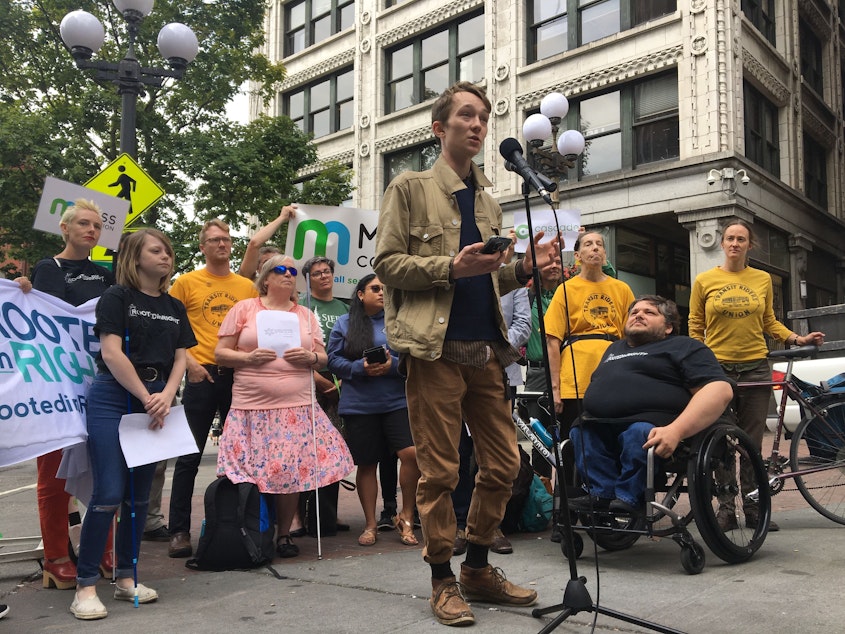Taming the mean streets (and sidewalks) of Seattle

Transportation advocates are pushing measures to make Seattle safer for people who aren’t in cars.
Within weeks of the Seattle Department of Transportation re-striping 35th Avenue Northeast without adding bike lanes as originally planned, a bicyclist and a motorcyclist were injured there in collisions with cars.
Legislation introduced by outgoing Seattle City Councilmember Mike O’Brien on Friday aims to prevent the mayor from blocking bike-lane projects, as Mayor Jenny Durkan did on 35th Avenue Northeast.
The legislation would require major repaving projects to include bike lanes or a written analysis of why adding the lanes wasn't feasible.
The requirement would apply to projects costing $1 million or more on roads that are included in the city’s bicycle master plan – a partially funded, six-year wish list for improving bike infrastructure on 50 miles of roadway.
Durkan’s office said the mayor supports the legislation as currently written.
“The Mayor also believes that it is critical to engage communities throughout the planning, designing and building phases of our transportation projects so that projects reflect the mobility needs of the community,” spokesperson Chelsea Kellogg said in an email.
Durkan canceled the 35th Avenue Northeast bike lanes after pushback from businesses concerned about the loss of on-street parking for cars.
Bicycle advocates have dubbed 35th “the Durkan Speedway.”
In 2017, 3 percent of downtown Seattle commuters went by bike, according to Commute Seattle. Eight percent walked, while 25 percent drove alone and 48 percent took transit.
"I would like to be able to walk and bike in my community and all over South Seattle, but, sadly, it is not safe to do so right now," Georgetown resident Rosario Medina said at a press conference organized by a coalition of transportation advocacy groups.
“The conversation that we’re having isn’t a ‘war on cars,’" Councilmember Abel Pacheco said. “It’s about all of us being soldiers in the fight against climate change.”
Another bill O'Brien introduced aims to reduce conflicts between pedestrians and rental bikes by providing more bike-parking corrals. Rental bikes are often parked haphazardly, turning sidewalks into obstacle courses, especially for disabled people.
“I can’t even tell you how many bikes that were completely blocking the sidewalk,” Marci Carpenter with the National Federation of the Blind said of a recent walk she and some blind friends took at Alki Beach.
“I’ve gotten my cane stuck in them before. I’ve had them fall over. Fortunately, I was able to back out before they fell on me.”
“There needs to be strict enforcement,” Carpenter said. “If you park your bike illegally, you get a fine.”
In an email, former Washington Secretary of Transportation Doug MacDonald said adding bike corrals would accomplish little unless the city cracks down on wayward bike-parkers.
“If SDOT would just use its power to impound a few bikes and the vendors threw the cost of redeeming the bikes back on the users, the 'education' problem would be solved near overnight on social media (Reddit-or-equal); behavior would change; and bike parking compliance would dramatically improve,” MacDonald said.
Software engineer and bicycle commuter Suresh Chanmugam said cars pose a much bigger threat to pedestrians than rental bikes do.
“We should focus most of our efforts making sure cars that are not running red lights, blocking crosswalks and being parked on sidewalks, in crosswalks and in bike lanes,” Chanmugam said.
Collisions causing serious injuries or death in Seattle increased in the first half of 2019, with vehicle-pedestrian collisions being the most common type, according to preliminary Seattle Department of Transportation data obtained by the Seattle Times.




